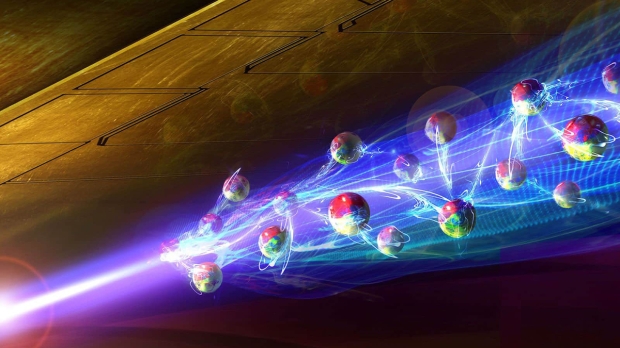A study on the molecule titled "Observation of Light-Induced Dipole-Dipole Forces in Ultracold Atomic Gases" has been published in the journal Physical Review X.
Researchers from the Technical University of Vienna (TU Wien) have a special bonding state between atoms using a laser to polarize two atoms. The atoms became positively charged on one side and negatively charged on the other, causing them to be weakly attracted to one another. The energy from the photons produced by the laser means the atoms effectively form a molecule of matter and light. However, the polarization only allows for a relatively weak bond compared to normal molecular bonds.
"This is a very weak attractive force, so you have to conduct the experiment very carefully to be able to measure it. If atoms have a lot of energy and are moving quickly, the attractive force is gone immediately. This is why a cloud of ultracold atoms was used," said Mira Maiwoger from TU Wien, the paper's first author.
The existence of such a molecule has long been theorized, but its confirmation shows a mechanism through which molecules could form in space, as well as avenues for manipulating ultracold atoms. Electromagnetic radiation propagating through space from stars can interact with cold atoms in space with little energy, polarizing them and inducing their ability to create molecules with other nearby atoms.
"In the vastness of space, small forces can play a significant role. Here, we were able to show for the first time that electromagnetic radiation can generate a force between atoms, which may help to shed new light on astrophysical scenarios that have not yet been explained," said Professor Philipp Haslinger.
"Polarising individual atoms with laser beams is basically nothing new. The crucial thing about our experiment, however, is that we have succeeded for the first time in polarising several atoms together in a controlled way, creating a measurable attractive force between them," said Matthias Sonnleitner, who laid the theoretical foundation for the experiment.
You can read more from the study here.



